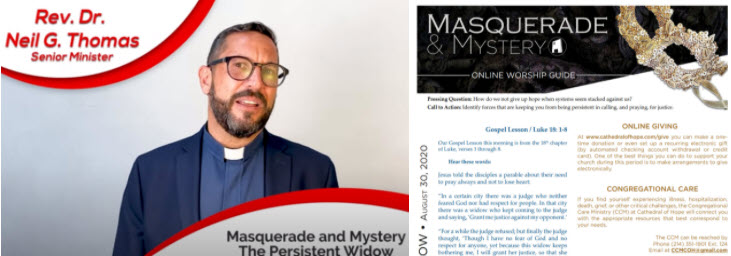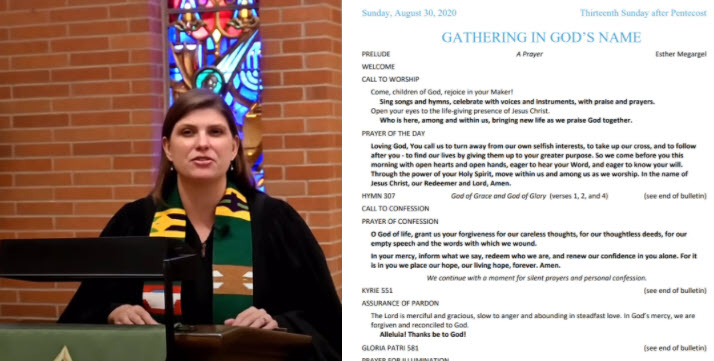After participating in corporate worship weekly or more often for all of my life, I’ve now gone six months without doing so as a result of COVID-19. Both of the congregations I belong to continue to provide virtual worship alongside other virtual opportunities for connection and discipleship. And, both congregations have yet to set a date to return to offering worship services that parishioners can attend in person.

The Unexpected: Virtual Worship Only
As I reflect on the last six months of worship, three unexpected happenings warrant consideration:
- Overall Experience. While nearly every congregation has considerable experience with in person worship, only a small percentage of congregations had substantive experience with virtual worship pre-COVID-19 (and most such experiences were designed for in person as primary and virtual as secondary). The learning curve has been steep for many congregations, and a remarkable number of services are nearly identical now to what was normative in person six months ago (excepting that many congregations record and edit the service rather than offer it live).
- Virtual Communion. Whether your tradition or denomination refers to this (Communion, Lord’s Supper, Eucharist) a sacrament or an ordinance the historic norm had been that this was offered in person. While shifting to allow for virtual Communion was not a big stretch for some traditions, it marked a major change for others (and the speed to formally allow for such varied widely).
- Duration. When virtual worship started no one knew just how long it would continue, but few projected it would continue into or beyond September 2020. Learning to embrace virtual is a growing edge for both those creating the content and those engaging with it. With several well known congregations announcing the earliest date for any form of in person worship would be in 2021 and others planning for a return to worship with social distancing and PPE but without singing, it is clear that pre-COVID-19 style worship won’t be returning any time soon.

So What?
The transition from doing something virtually you’ve only ever done in person is challenging. Since I am not currently serving a congregation, I’ll share my only experience with such a radical shift: education.
I knew education well by my late twenties. I’d completed high school, an undergraduate degree, and a graduate degree. And, I’d started working on a professional doctoral degree. All such learning experiences happened in person in classrooms.
I remember taking my first online class as a doctoral student nearly twenty years ago. The experience was just like attending in person, except that I was remote. While some online courses were taught to a fully online audience, others included a mix of in classroom learners and online learners. This likely sounds exactly like the present situation: many congregations are producing worship services that are just like they would be in person or vary only slightly then providing them either for a remote audience or, increasingly, for a small in sanctuary audience supplemented by a larger at home audience.
Since completing that degree, I’ve been involved in online education professionally. In higher education I designed and facilitated several undergraduate courses and taught dozens of workshops to faculty seeking to improve their online teaching abilities. I’ve also led a national healthcare company’s online learning and led a national medical association’s online education division.
Quality online education has evolved dramatically since my initial involvement. Even with these advances, some – especially those with limited competition or who are new entrants due to COVID-19 – provide experiences that look a lot like my initial experience nearly twenty years ago.
Creating virtual first or virtual only content is essential during COVID-19. For congregations, it will become a part of the next normal in life beyond COVID-19 as well. Now is the time to think big, innovate with boldness, and co-create the future church.